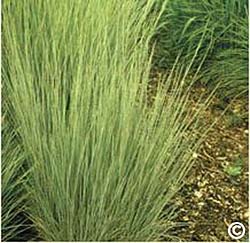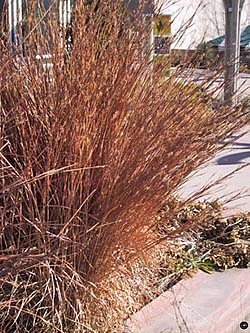 Ornamental grasses have become a major part of the landscape in the last twenty years. While providing many ornamental attributes and relative ease of care, a number of perennial grasses do require division periodically to maintain vigor and appearance.
Ornamental grasses have become a major part of the landscape in the last twenty years. While providing many ornamental attributes and relative ease of care, a number of perennial grasses do require division periodically to maintain vigor and appearance.
Do I need division between my grasses?
Spacing and visual appearance often dictate when division is necessary. Overcrowded grasses can lose vigor and become less appealing. When the center of the grass clump dies, leaving grass blades just around the edges, division is necessary.
When should I divide my grasses?

Due to Colorado’s typical cold, dry winters, spring division, before growth resumes, is the most successful, especially for warm season grasses such as Miscanthus, Pennisetum, big bluestem, little bluestem and switchgrass. Cool season grasses such as blue oat grass, blue fescue, and “Karl Foerster” and “Overdam” feather reed grass can be divided in late summer and fall. Good fall and winter watering and proper mulching is necessary or the divisions will desiccate and die over the winter.
How do I divide grasses?
 To divide grasses, cut the foliage back to 4-6 inches. Dig the entire clump up from the ground. Use a sharp spade, a large knife, an axe, or in some cases a chainsaw to cut through the core and halve the clump completely. Then proceed to quarter it. Separate living divisions from dead or diseased tissue by hand and make sure each division has a good root system still attached. Dead core material should be disposed of or composted. Replant divisions as soon as possible, water well, and protect with mulch up to 3″ deep.
To divide grasses, cut the foliage back to 4-6 inches. Dig the entire clump up from the ground. Use a sharp spade, a large knife, an axe, or in some cases a chainsaw to cut through the core and halve the clump completely. Then proceed to quarter it. Separate living divisions from dead or diseased tissue by hand and make sure each division has a good root system still attached. Dead core material should be disposed of or composted. Replant divisions as soon as possible, water well, and protect with mulch up to 3″ deep.
For more information, see the following Planttalk Colorado™ video(s).
For more information, see the following Colorado State University Extension fact sheets(s).
For more information, see the following Planttalk Colorado™ script(s).



